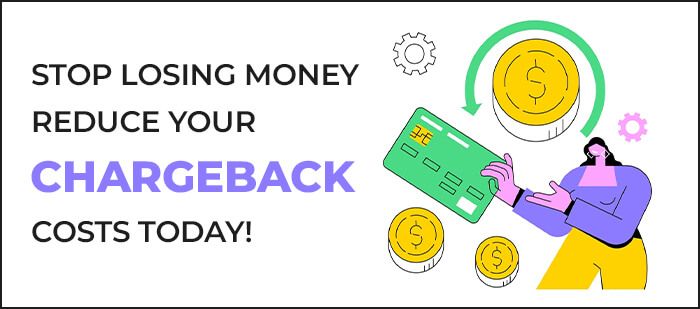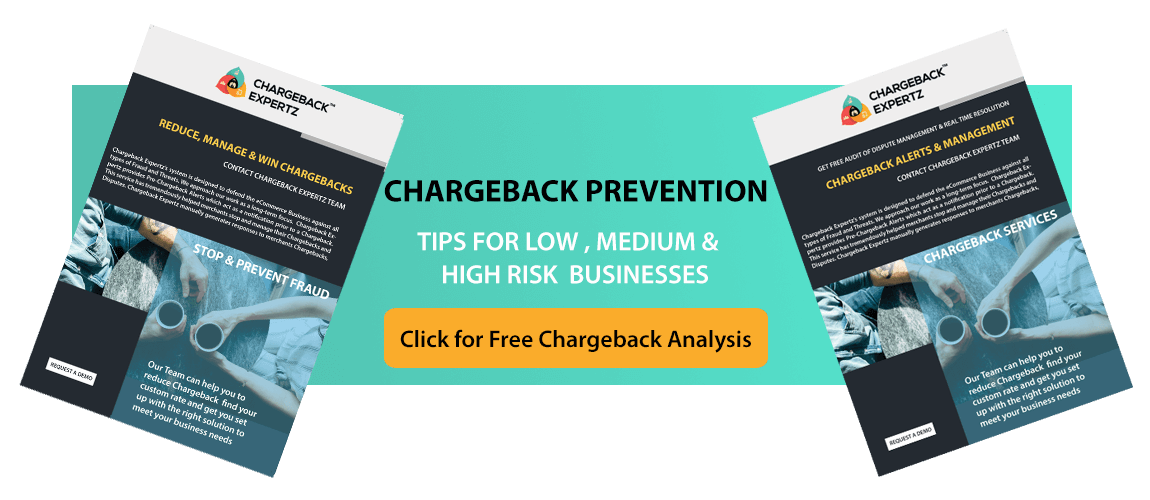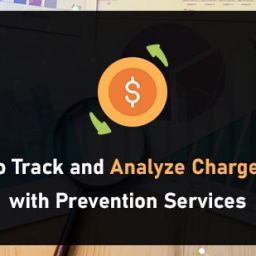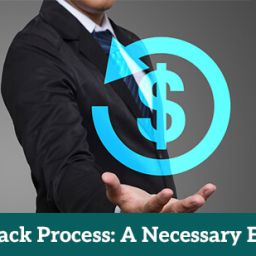
Chargebacks are a major source of frustration for many businesses. They can be costly and time-consuming to resolve, and they can damage your reputation with customers. Fortunately, there are steps you can take to reduce your chargeback costs and keep your business profitable. In this blog post, we’ll discuss how to minimize chargeback costs and stop losing money on these transactions. By taking the time to understand your chargebacks and implementing effective strategies, you can reduce your chargeback costs and help your business thrive.
Understanding Chargebacks
Chargebacks can be a frustrating aspect of running a business, but understanding them is crucial to minimizing their impact on your bottom line. Simply put, a chargeback occurs when a customer disputes a transaction with their credit card company, resulting in the reversal of the payment. This can happen for various reasons, such as unauthorized transactions, dissatisfaction with the product or service, or even simple misunderstandings.
One important thing to note is that chargebacks should not be viewed as an indictment of your business. They are a normal part of the payment process, and sometimes, they are even beyond your control. However, understanding the common reasons for chargebacks can help you identify areas where improvements can be made. By analyzing patterns and trends, you can address any issues proactively and prevent future chargebacks.
It’s important to recognize that chargebacks are not without consequences. In addition to the loss of revenue from the disputed transaction, you may also be liable for chargeback fees imposed by the credit card company. These fees can add up quickly, eating into your profits and hindering your business growth.
Next, we’ll explore the common reasons behind chargebacks and provide practical tips on how to prevent them from occurring in the first place. Stay tuned!
Some Related Blogs
- The Power of Prevention: Avoiding In-App Purchase Chargebacks
- The Ultimate Guide to Ad Fraud Prevention | Chargeback Expertz
- Fraud Alert: Shield Your Business from Costly Chargebacks
- Cloned and Scammed: The Risks and Dangers of Clone Phishing
Common Reasons for Chargebacks
Chargebacks can occur for a variety of reasons, and it’s important for businesses to understand these common causes in order to effectively prevent them. One of the most frequent reasons for chargebacks is unauthorized transactions. Customers may dispute a transaction if they believe their credit card information was stolen or if they didn’t authorize the purchase themselves. In these cases, it’s crucial to have robust fraud prevention measures in place to verify the legitimacy of transactions and protect customer information.
Another common reason for chargebacks is dissatisfaction with the product or service. If customers feel that the product did not meet their expectations or if they were promised something that was not delivered, they may initiate a chargeback to recoup their money. This highlights the importance of providing clear and accurate product descriptions, as well as excellent customer service to address any concerns or issues that may arise.
Misunderstandings can also lead to chargebacks. Customers may not recognize a charge on their credit card statement and dispute it, not realizing that it is for a legitimate purchase they made. To avoid this, businesses should ensure that their billing descriptors are clear and easily identifiable, so customers can easily recognize the charges on their statements.
By understanding these common reasons for chargebacks, businesses can implement proactive measures to prevent them. In the next section, we’ll provide practical tips on how to prevent chargebacks and protect your business from unnecessary costs.
Tips to Prevent Chargebacks
Preventing chargebacks is crucial for any business looking to reduce costs and protect its bottom line. Here are some practical tips to help you minimize the occurrence of chargebacks and keep your business profitable.
- Improve Communication: Ensure that your customers have clear and accurate information about your products or services. Provide detailed product descriptions, including any potential limitations or restrictions. Be transparent about your refund and return policies to avoid customer dissatisfaction.
- Enhance Customer Service: Delivering exceptional customer service can go a long way in preventing chargebacks. Address customer concerns promptly and professionally. Make it easy for customers to reach out to you for assistance or clarification, whether through phone, email, or live chat.
- Use Secure Payment Systems: Implement secure payment systems and fraud prevention measures. This includes using encryption technology and complying with Payment Card Industry Data Security Standard (PCI DSS) requirements. By ensuring that customer data is protected, you can reduce the risk of unauthorized transactions and subsequent chargebacks.
- Verify Transactions: Implement a process to verify the legitimacy of transactions, especially for high-value or suspicious orders. This can involve manual reviews or using fraud detection tools to identify potential fraudulent activity.
- Keep Accurate Records: Maintain detailed records of all transactions and customer interactions. This documentation can be useful when responding to chargeback disputes, providing evidence of the legitimacy of the transaction or resolving any misunderstandings.
- Offer Easy Refunds and Exchanges: Providing hassle-free refund and exchange policies can reduce the likelihood of customers initiating chargebacks. Make the process simple and convenient, clearly communicating the steps involved and any applicable fees or conditions.
- Monitor and Respond to Chargeback Notifications: Stay vigilant and regularly check for chargeback notifications from your payment processor. Respond promptly to these notifications, providing any necessary documentation or evidence to support your case.
Implementing these tips can help you minimize chargebacks and protect your business from unnecessary costs. By prioritizing customer satisfaction and maintaining secure payment systems, you can reduce the occurrence of chargebacks and keep your business thriving. Stay tuned for the next section where we’ll explore the steps to handle chargebacks effectively.
Steps to Handle Chargebacks
Once you receive a chargeback notification, it’s important to take prompt action to handle it effectively. Here are the steps you should follow to manage chargebacks and protect your business:
- Review the chargeback reason: Carefully read the reason provided by the customer’s credit card company for the chargeback. Understanding the specific issue will help you respond appropriately and provide any necessary evidence.
- Gather supporting evidence: Collect all relevant documentation to support your case. This may include proof of delivery, customer communication records, transaction receipts, and any other evidence that demonstrates the validity of the transaction.
- Prepare a response: Craft a clear and concise response to the chargeback. Address the reason provided by the customer and provide a detailed explanation of why the charge is legitimate. Attach the supporting evidence you gathered to strengthen your case.
- Submit the response: Send your response and supporting evidence to the appropriate department or entity as instructed by your payment processor. Ensure that you meet any specified deadlines for submission.
- Monitor the resolution: Stay updated on the progress of the chargeback resolution. Your payment processor will communicate any updates or requests for additional information. Respond promptly and provide any requested documentation to assist in resolving the chargeback in your favor.
- Learn from the experience: Regardless of the outcome, use each chargeback as an opportunity to improve your business processes. Identify any weaknesses or areas for improvement and implement changes to prevent future chargebacks.
By following these steps, you can effectively handle chargebacks and increase your chances of a favorable resolution. Remember, addressing chargebacks promptly and professionally is crucial to protecting your business and maintaining a positive reputation.
Tools and Services to Help Reduce Chargebacks
Chargebacks can be a significant headache for businesses, but fortunately, there are tools and services available to help reduce the occurrence of chargebacks and protect your bottom line. One valuable tool is chargeback management software, which can help you track and analyze chargeback data, identify trends and patterns, and implement proactive measures to prevent future chargebacks. These tools can provide insights into the common reasons behind chargebacks and help you develop strategies to address them effectively. Additionally, there are service providers that specialize in chargeback prevention and dispute resolution.
![]()
Email us anytime!
Email customer service 24/7
![]()
Call us anytime!
Reach customer care 24/7 at +1 (888) 901-8653
These providers can assist with handling chargebacks, preparing responses, and navigating the complex process of disputing chargebacks. By partnering with these experts, you can save time and effort while increasing your chances of a successful resolution. Overall, utilizing these tools and services can help you streamline your chargeback management process, reduce costs, and protect your business from unnecessary losses. Consider exploring these options to enhance your chargeback prevention efforts and keep your business thriving.
Benefits of Reducing Chargebacks
Reducing chargebacks can have numerous benefits for your business, both financially and reputation-wise. First and foremost, by implementing effective chargeback prevention strategies, you can save money. Chargebacks can be costly, with fees imposed by credit card companies adding up quickly. By minimizing the occurrence of chargebacks, you can retain more revenue and increase your profitability.
Furthermore, reducing chargebacks can help protect your business’s reputation. Excessive chargebacks can damage your credibility with customers, who may view them as a sign of poor quality products or services. By preventing chargebacks, you can demonstrate your commitment to customer satisfaction and maintain a positive reputation in the market.
In addition, by focusing on chargeback prevention, you can improve your overall operational efficiency. Addressing chargebacks can be time-consuming and distract you from core business activities. By reducing chargebacks, you can allocate more time and resources to growing your business and serving your customers.
Ultimately, reducing chargebacks can lead to improved customer relationships and increased customer loyalty. By preventing disputes and providing excellent customer service, you can build trust with your customers and foster long-term relationships. This can result in repeat business, positive reviews, and word-of-mouth recommendations, all of which contribute to the long-term success of your business.
In summary, reducing chargebacks offers numerous benefits, including financial savings, a positive reputation, improved efficiency, and enhanced customer relationships. By implementing effective chargeback prevention strategies, you can protect your bottom line and position your business for long-term success.





